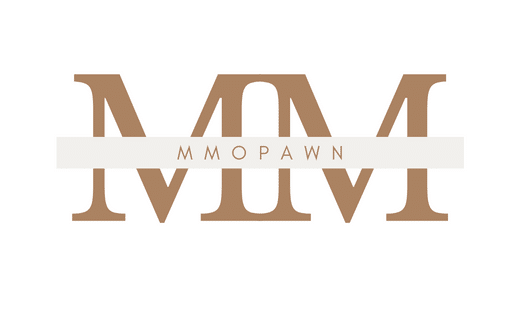Tourists from around the globe swarm to historic sites, seeking an authentic, first-hand experience of the events that shaped history. The United Kingdom, with its rich past, has no shortage of such sites, especially when it comes to battlefields. These locales, steeped in history, tell tales of triumph, tragedy, and the sheer tenacity of the human spirit. However, in the digital age, the way tourists interact with these historic sites is changing. Digital mapping of historic battlefields is emerging as a potent tool to enhance the UK’s educational tourism. But how can it achieve this feat? Let’s delve into this intriguing question.
The Significance of Historic Battlefields in the UK
In any tour of the United Kingdom, a visit to its historic battlefields is almost mandatory. These historical sites are crucial not only from a tourist perspective but also for their educational value. They provide a tangible link to significant events in UK’s history, offering an immersive experience that textbooks can’t replicate.
A voir aussi : How Are Smart Fabrics Being Used in UK’s Health Monitoring Systems?
Battlefields are the silent witnesses of history, where pivotal events unfolded that shaped the course of nations. The UK, steeped in history, has numerous such sites that draw tourists year after year. From the Battle of Hastings in 1066 to the Battle of Bosworth Field in 1485, these sites offer a window into the past and engage visitors in a way that museums and traditional tourist destinations often can’t.
However, the potential of these historic sites is often under-utilised. While a battlefield may be rich in history, it can be challenging for the average visitor to visualise the events that transpired there centuries ago. Digital mapping offers a solution to this problem.
Avez-vous vu cela : What Is the Future of Liver Disease Treatment with Organ-on-a-chip Technology?
Digital Mapping: A Modern Solution to an Age-Old Problem
With the advent of advanced technology, digital mapping has emerged as an innovative tool to enhance the visitor experience at historic sites. It provides a virtual model of the battlefield, complete with data about the key events, the forces involved, their movements, and the final outcome. This wealth of information, presented in an interactive and engaging format, can greatly enrich the experience for tourists.
Digital mapping uses Geographic Information System (GIS) technology to create detailed, interactive maps of historic sites. These maps can be accessed through mobile devices, allowing tourists to explore the battlefield at their own pace. They can click on specific locations to learn more about the events that took place there, see images or videos, or listen to audio narrations.
Moreover, digital maps can be overlaid with contemporary maps, allowing visitors to compare the battlefield as it was during the battle with its present state. This juxtaposition can provide a powerful perspective on how the battlefield has changed over time, and how history has left its mark on the landscape.
Enhancing Educational Tourism Through Digital Mapping
Educational tourism is a burgeoning sector in the UK, attracting students, researchers, and history buffs from all over the world. Incorporating digital mapping into historic battlefield tours can significantly enhance the educational value of these tours.
Digital maps are rich in data, providing a wealth of information at a glance. Users can not only visualise the battlefield but also access detailed information about the battle, the troops involved, their strategies, and the impact of the battle on the course of history. This can provide a more comprehensive understanding of the event, making the visit more rewarding and informative.
Moreover, digital mapping can also facilitate self-guided tours. Visitors can navigate the battlefield on their own, using the digital map as a guide. This can promote active learning, as visitors are not merely passive recipients of information but are actively exploring and discovering the history of the site.
The Impact of Digital Mapping on Local Communities
Digital mapping of historical battlefields can also have a positive impact on local communities. It can boost tourism, creating job opportunities and contributing to the local economy. In addition, the process of creating digital maps can involve local residents, giving them a sense of ownership and pride in their heritage.
Furthermore, digital mapping can also aid in the preservation and conservation of historic sites. By providing detailed data about the site, it can help identify areas that need restoration or protection. It can also raise awareness about the importance of these sites, encouraging visitors and locals alike to respect and preserve these tangible links to the past.
In essence, digital mapping of historical battlefields can play a pivotal role in enhancing the UK’s educational tourism. It offers a dynamic, interactive, and informative way for tourists to interact with history, making their visit more memorable and enriching. Moreover, it also holds potential benefits for local communities, contributing to economic development and heritage conservation. While the winds of change may be sweeping across the landscape, the past, it seems, is just a click away.
The Role of Digital Mapping in Battlefield Tourism
In the realm of battlefield tourism, the integration of digital mapping holds the potential to revolutionise the visitor experience. As a tool, it’s not only technologically advanced but also highly educational. It provides a comprehensive overview of the battlefield, allowing tourists to delve deep into the past and gain a broader understanding of historical events.
Digital maps can be laden with a myriad of information, from the movements of troops to strategic details of the battle. This information, accessible through a simple click, allows visitors to explore different aspects of the historic environment at their own pace. They can learn about the strategies involved in the revolutionary war or the great war, understand the impact of these events on the economy history, and much more. It’s akin to having a knowledgeable guide at one’s fingertips, ready to provide a wealth of information on demand.
For sites without a visitor centre, digital mapping serves as a convenient and accessible alternative, taking battlefield tours to an entirely new level. Furthermore, the capability to overlay the battle map with contemporary maps presents tourists with a unique perspective. They can see how the battlefield has evolved over time from the civil war era to the present day. This not only enriches the tourist experience but also instils a sense of respect for the cultural heritage of these historic sites.
Conclusion: Digital Mapping – Enriching Education and Preserving Heritage
In conclusion, digital mapping is a game-changer in the field of educational tourism in the UK. It can significantly enhance the visitor experience at battlefield sites, transforming them into interactive classrooms where history comes alive. From students to researchers to history buffs, everyone stands to gain from the wealth of information these digital maps provide.
But the benefits of digital mapping extend beyond tourism. It can also contribute to the preservation and community archaeology of historic sites. As these maps provide a detailed overview of the battlefields, they can help identify areas that need restoration or protection. This can guide conservation efforts, ensuring that these historic sites are preserved for future generations.
Moreover, digital mapping can also contribute to the local economy. As the tourism industry thrives, it creates job opportunities and stimulates growth in the local economy. And when the local community is involved in the process of creating these maps, it fosters a sense of pride and ownership in their history.
The potential of digital mapping in enhancing the UK’s educational tourism is immense. As more and more historic battlefields embrace this technology, the future of educational tourism in the UK looks promising. In this digital age, the past is indeed just a click away, and history is no longer confined to textbooks. Instead, it’s a living, breathing entity, ready to be explored and appreciated by all – thanks to the power of digital mapping.






